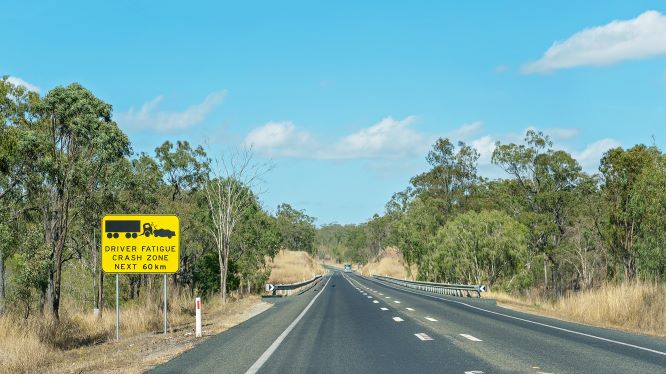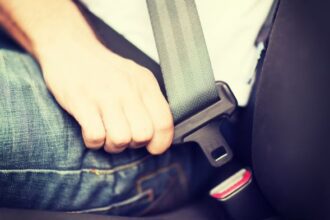Tips to avoid driver fatigue
Read these tips on avoiding driver fatigue before heading out on the roads this holiday season.
Driver fatigue is one of the top three contributors to deaths on Australian roads. In fact, research conducted for Transport NSW has shown that fatigue can be as dangerous as drink driving. But unlike drink driving, there are no laws regulating driver fatigue.1 Many people think fatigue is only a problem for long distances, however it is just as relevant for shorter trips as well. People generally don’t become fatigued from driving. Usually, they’re already tired when they get behind the wheel, either from long hours at their job, shift work, lack of sleep, sleep apnoea, or physically demanding tasks.2
Watch for the early warning signs of fatigue
Regardless of the distance you plan to travel, make sure you have had enough sleep before driving. The early warning signs of fatigue are:
- Yawning
- Poor concentration or daydreaming
- Sore or heavy eyes
- Restlessness
- Drowsiness
- Slow reaction times
- Boredom or loss of motivation
- Impaired driving performance, such as oversteering
Tips for avoiding driver fatigue
Sleeping is the best way to address fatigue. If you’re tired, make a choice not to drive, or follow these tips to prevent fatigue:2
- Get a good night’s sleep
- Don’t travel for more than 8-10 hours each day
- Avoid driving at night or any periods when your body is accustomed to sleep
- Arrange to share the driving
- Avoid long drives after work
- Plan to take regular breaks – at least every two hours at a designated rest area
- Don’t drink alcohol before your trip — even a small amount can significantly contribute to driver fatigue
- Stop driving and take a 15-minute power nap if you feel drowsy
- Find out beforehand if any medications you are taking may affect your driving
Rest areas and driver reviver locations
Designated rest areas allow drivers and motorcyclists to park safely and walk around before continuing their journey. Service centres, petrol stations, parks, and country towns are other places you can stop and take a break from driving.1
Driver reviver sites operate during holiday periods. Look out for specially marked coffee cup signs along major highways to find out where and when they are operating.3
Disclaimer
Insurance and Membership Services Limited, ABN 59 057 159 743 AR Number 246235 trading as COTA Insurance arranges this insurance as agent for the insurer Allianz Australia Insurance Limited ABN 15 000 122 850 AFSL No 234708. We do not provide any advice based on any consideration of your objectives, financial situation or needs. Terms, conditions, limits and exclusions apply. Before making a decision, please consider the Product Disclosure Statement . The relevant Target Market Determination is available by calling 1300 1300 50. If you purchase this insurance, we will receive a commission that is a percentage of the premium. Ask us for more details before we provide you with services.
Information provided in this article is designed to be a guide only and was believed to be correct at time of publication. Please consider your own personal circumstances when reading the information contained within the article. In some cases, information has been provided to us by third parties and while that information is believed to be accurate and reliable, its accuracy is not guaranteed in any way. Any opinions expressed constitute our views at the time of issue and are subject to change. Neither Allianz, nor its employees or directors give any warranty of accuracy or accept responsibility for any loss or liability incurred by you in respect of any error, omission or misrepresentation in this article.
References











